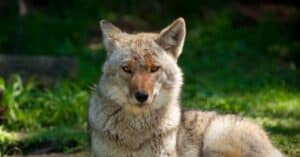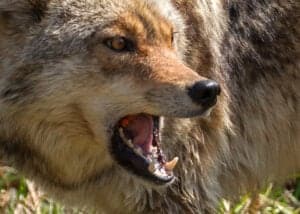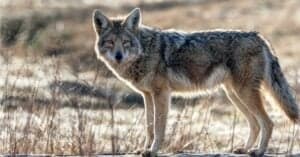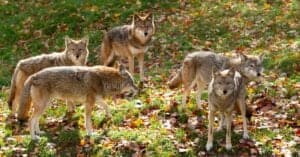Coyote Mating Season and Habits: What You Need to Know

Angel DiBilio/Shutterstock.com
The coyote, Canis latrans, is a very adaptable creature. It is a native mammal that has expanded its territory due to human alteration of the landscape and wolf intolerance. It is currently common in many parts of North and Central America. Since it is common to spot coyotes in the suburbs and cities, it is wise to know when coyote mating season is and what their habit are during this time. Here’s what you need to know.
Coyote Mating Season
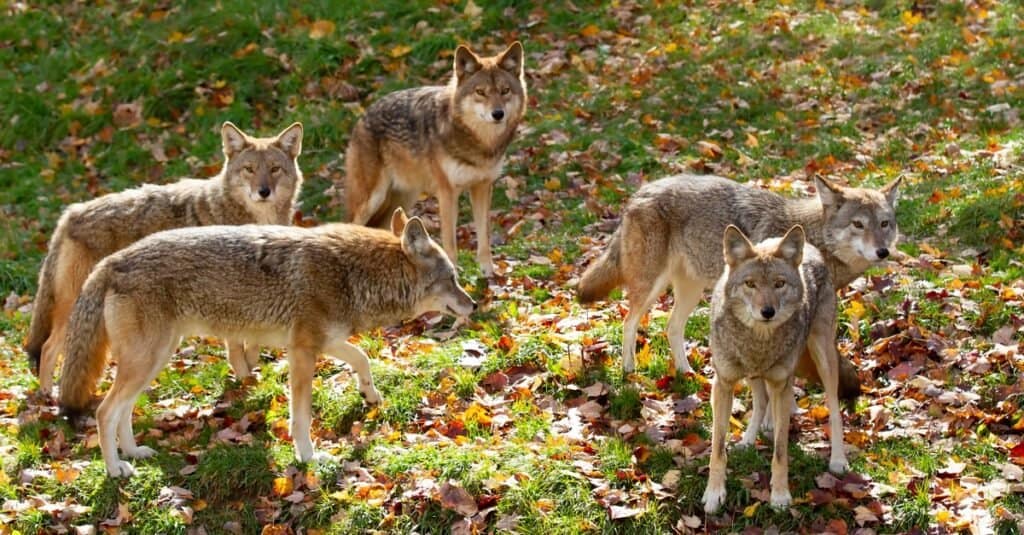
Jim Cumming/Shutterstock.com
Breeding season for coyotes lasts 4-6 weeks and peaks in late February to early March. Researchers describe the seasons as follows: mating, pup raising, and dispersal. A young coyote leaves the group to find its own territory. Breeding season for coyotes varies by about a month based on the coyotes’ location. The breeding season has no “peak,” say scientists. It varies year to year depending on weather, prey quantity, etc.
Coyote Mating Habits

JayPierstorff/Shutterstock.com
Mating
Mating in coyotes occurs when both coyotes are “locked” together for up to 20 minutes. Coyotes rarely ever leave their companions. Most canines are socially monogamous but may stray when food is scarce. When a female is in heat, the male will usually closely guard and accompany her. Some females spawn as early as 2 years old. Males can breed as early as 3 years old.
Den Digging
Prenatal females dig a den or find an alternative (expand another creature’s hole, hide behind a boulder or fallen tree trunk, etc.). During birth, she wants to be alone, therefore the male waits or guards the area outside where delivery occurs for roughly a week. The male frequently provides food to the female. It takes coyote mothers anywhere from a day to over a week to emerge from their dens after birth takes place.
Gestation and Birth
Pups are born 63 days after conception. Although as many as seven pups have been witnessed from birth, the average is three or four pups per litter. Sadly, the survival rate is as low as 20%, yet it is higher in cities. Both parents rear the pups. Lactation lasts until June. Weaning puppies are fed regurgitated food by their parents, which is gradually replaced by more solid food, such as dead and live rodents. This is done until the pups can forage for themselves.
Hunting
Pups are hidden until they can take care of themselves. Then they hunt in pairs or threes, and eventually, the kids go on their own hunting and exploration expeditions. They normally leave between one and two years old. During the 1-2 years before dispersal, they have extraordinarily rich family lives, with relationships and feelings that parallel our own.
Is There Increased Aggression During Mating Season?
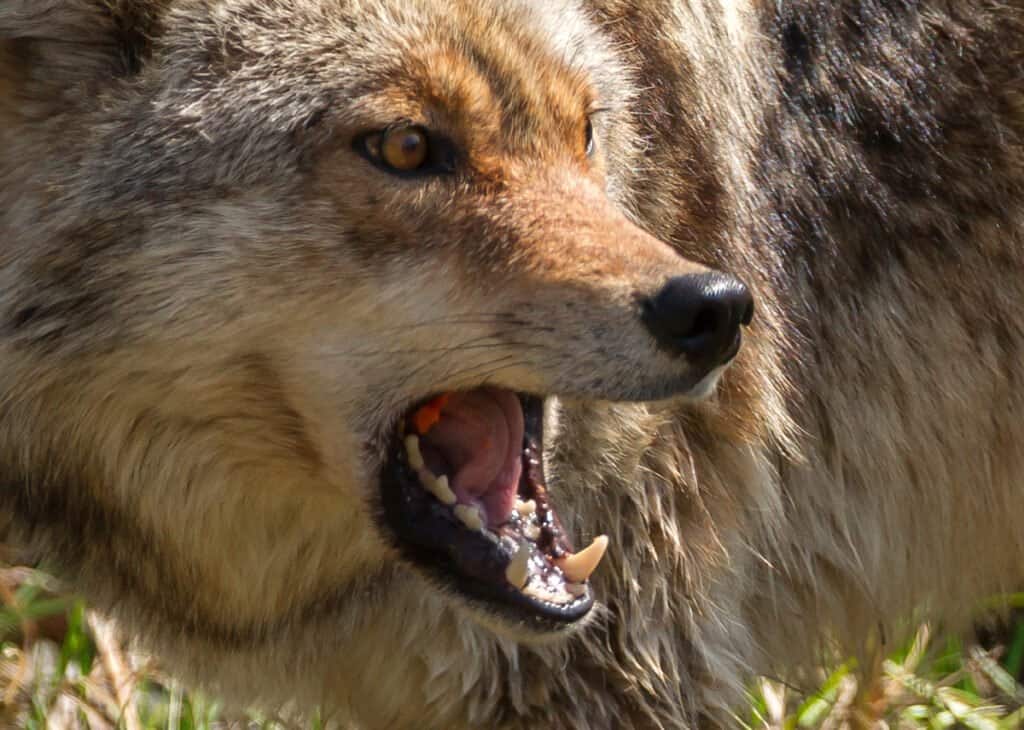
Derek R. Audette/Shutterstock.com
It is possible that coyote attacks on pets will rise during mating season. Male coyotes are not usually aggressive. A pack of coyotes may protect its territory. Territorial assaults are more likely on larger dogs perceived as a threat by coyotes.
Winter food might be scarce. Coyote attacks may rise if coyotes enter urban/suburban areas in search of simpler food. In this circumstance, tiny dogs and cats can be attacked.
Overall, seasonality does not predict coyote attacks. More research suggests that coyote assaults rise during pup raising season, not breeding season.
Pup Season Attacks
Attacks on pets increase during pup rearing due to increased pup food needs and/or coyote protection. Medium-large dogs are more likely to be attacked if they approach a coyote den.
Keeping Pets Safe from Coyotes During Pup Season
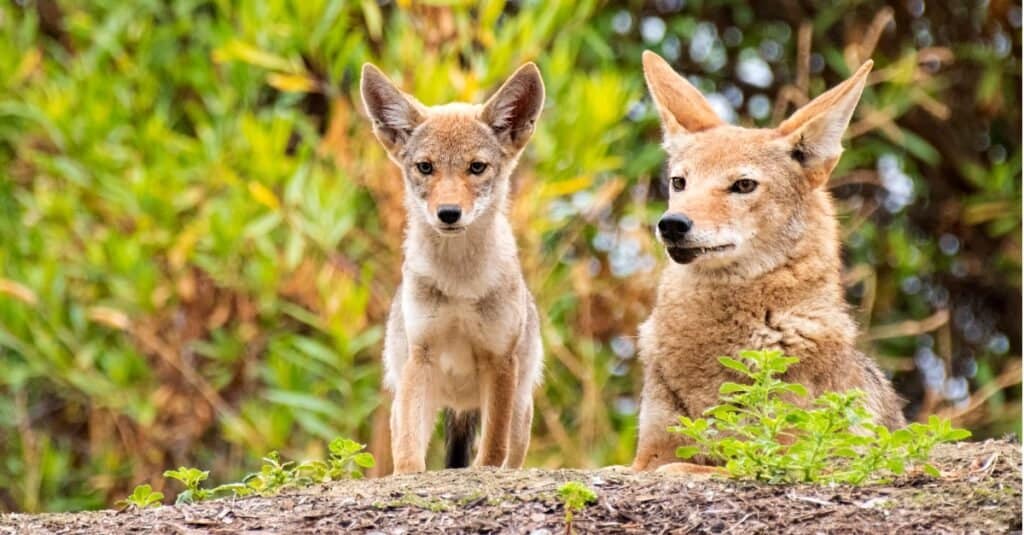
iStock.com/roclwyr
Even in a fenced yard, don’t let tiny dogs alone. attacks occur while dogs were off-leash in a yard with a 6-10 foot fence.
Never leave cats and small dogs alone at night outside. 7 PM-7 AM were the most common times of the night for dog attacks in California. In Arizona, most cat assaults occurred between 10 PM – 5 AM. Don’t allow dogs to go loose in the woods in the winter or spring. Off-leash, your dog is more likely to run into a pack of coyotes. It is possible that coyotes will defend their lair or pups during mating season.
Finally, don’t leave food or trash out late at night. Coyotes that eat human or pet food are more likely to attack humans or pets. To get more.
Keep in mind…
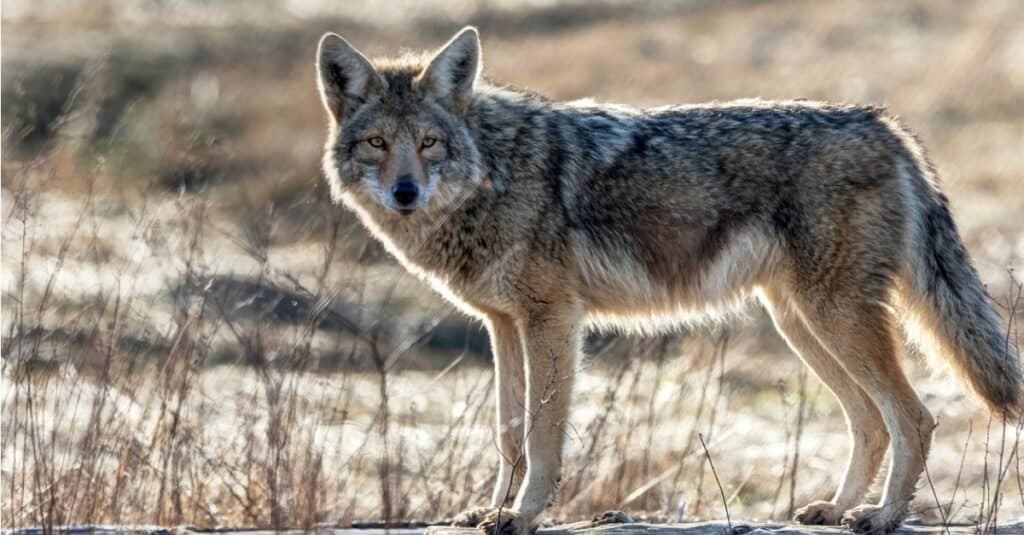
iStock.com/jamesvancouver
It is important to note that coyote assaults and violent behavior are rare in most of the US and Canada. Most reports found are simply sightings, not attacks.
More from A-Z Animals

Angel DiBilio/Shutterstock.com
The coyote, Canis latrans, is a very adaptable creature. It is a native mammal that has expanded its territory due to human alteration of the landscape and wolf intolerance. It is currently common in many parts of North and Central America. Since it is common to spot coyotes in the suburbs and cities, it is wise to know when coyote mating season is and what their habit are during this time. Here’s what you need to know.
Coyote Mating Season

Jim Cumming/Shutterstock.com
Breeding season for coyotes lasts 4-6 weeks and peaks in late February to early March. Researchers describe the seasons as follows: mating, pup raising, and dispersal. A young coyote leaves the group to find its own territory. Breeding season for coyotes varies by about a month based on the coyotes’ location. The breeding season has no “peak,” say scientists. It varies year to year depending on weather, prey quantity, etc.
Coyote Mating Habits

JayPierstorff/Shutterstock.com
Mating
Mating in coyotes occurs when both coyotes are “locked” together for up to 20 minutes. Coyotes rarely ever leave their companions. Most canines are socially monogamous but may stray when food is scarce. When a female is in heat, the male will usually closely guard and accompany her. Some females spawn as early as 2 years old. Males can breed as early as 3 years old.
Den Digging
Prenatal females dig a den or find an alternative (expand another creature’s hole, hide behind a boulder or fallen tree trunk, etc.). During birth, she wants to be alone, therefore the male waits or guards the area outside where delivery occurs for roughly a week. The male frequently provides food to the female. It takes coyote mothers anywhere from a day to over a week to emerge from their dens after birth takes place.
Gestation and Birth
Pups are born 63 days after conception. Although as many as seven pups have been witnessed from birth, the average is three or four pups per litter. Sadly, the survival rate is as low as 20%, yet it is higher in cities. Both parents rear the pups. Lactation lasts until June. Weaning puppies are fed regurgitated food by their parents, which is gradually replaced by more solid food, such as dead and live rodents. This is done until the pups can forage for themselves.
Hunting
Pups are hidden until they can take care of themselves. Then they hunt in pairs or threes, and eventually, the kids go on their own hunting and exploration expeditions. They normally leave between one and two years old. During the 1-2 years before dispersal, they have extraordinarily rich family lives, with relationships and feelings that parallel our own.
Is There Increased Aggression During Mating Season?

Derek R. Audette/Shutterstock.com
It is possible that coyote attacks on pets will rise during mating season. Male coyotes are not usually aggressive. A pack of coyotes may protect its territory. Territorial assaults are more likely on larger dogs perceived as a threat by coyotes.
Winter food might be scarce. Coyote attacks may rise if coyotes enter urban/suburban areas in search of simpler food. In this circumstance, tiny dogs and cats can be attacked.
Overall, seasonality does not predict coyote attacks. More research suggests that coyote assaults rise during pup raising season, not breeding season.
Pup Season Attacks
Attacks on pets increase during pup rearing due to increased pup food needs and/or coyote protection. Medium-large dogs are more likely to be attacked if they approach a coyote den.
Keeping Pets Safe from Coyotes During Pup Season

iStock.com/roclwyr
Even in a fenced yard, don’t let tiny dogs alone. attacks occur while dogs were off-leash in a yard with a 6-10 foot fence.
Never leave cats and small dogs alone at night outside. 7 PM-7 AM were the most common times of the night for dog attacks in California. In Arizona, most cat assaults occurred between 10 PM – 5 AM. Don’t allow dogs to go loose in the woods in the winter or spring. Off-leash, your dog is more likely to run into a pack of coyotes. It is possible that coyotes will defend their lair or pups during mating season.
Finally, don’t leave food or trash out late at night. Coyotes that eat human or pet food are more likely to attack humans or pets. To get more.
Keep in mind…

iStock.com/jamesvancouver
It is important to note that coyote assaults and violent behavior are rare in most of the US and Canada. Most reports found are simply sightings, not attacks.

